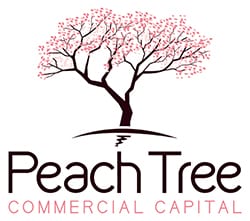It’s easy for small business owners to load up on debt, but not always easy to manage it. If not managed carefully, debt can get out of hand, draining cash flow, impacting credit scores, and deterring investors. When a business is carrying debt and tapped out of financial resources, it can seem like the end of the road.
There is, however, a way to reduce expenses and the cost of borrowing to increase cash flow in the company, even under these seemingly dire circumstances. The U.S. Small Business Administration helps small businesses refinance with low-interest rate loans under certain conditions.
When people talk about SBA loans, they’re typically referring to either the SBA 7(a) loan or the SBA 504 loan. There are other loan products offered by the SBA, including variations of the 7(a) loan, but these two are the main financial tools. The 7(a) is unique in that it’s a little more flexible than the 504. SBA 7(a) loans can be used for working capital, in addition to real estate, construction, and equipment.
This article will give an overview of the SBA refinancing process as a starting point when deciding if SBA refinancing is the right solution for your small business.
SBA 7(a) Refinancing
The SBA will not refinance a loan that it wouldn’t have approved, to begin with. For example, if you took out a loan from Bank X to fund a business dealing in rare coins and stamps, it’s not eligible for refinancing through the SBA. That’s because that type of business would not have originally qualified for an SBA loan.
Base Requirements
The SBA’s basic eligibility requirements for its 7(a) loan have to be met before any debt can be considered for refinancing. A business must be for-profit, do business in the U.S., have owner equity invested, and have exhausted alternative financial resources before applying. In addition, the business must have $15M or less in total net worth and make $5M or less in net annual revenue.
Loan Information
When you apply for SBA refinancing, you’ll need documents that show the original debt’s terms, balance, payment history, and lender. In addition, you’ll need to submit a written justification stating that your current loan terms are unreasonable. Examples of unreasonable terms are an interest rate above the SBA’s maximum, a non-renewable line of credit, and over-collateralization.
Business Information
The SBA lender needs to know about your business. How old is it? Size, location, industry, and type of business are all important. As a general rule, you need to include three years of financial information. Gather tax returns, balance sheets, profit and loss statements, and an income projection. Show how your business will benefit from the improved loan terms after refinancing.
Personal Information
Even though you’re refinancing a business loan, the SBA requires certain personal information about you. You’ll give this information on SBA-specific forms, like the SBA 912 Statement of Personal History and the SBA 1919 Borrower Information Form. Expect a background and credit check. Depending on your lender, you’ll want to have your professional resume and personal tax returns handy also.
SBA 504 Refinancing
There are a few differences between this loan and the 7(a). For instance, an SBA 504 loan doesn’t cover working capital. So, if your original loan wasn’t for real estate, construction, or equipment, chances are it won’t qualify for refinancing under the SBA 504 program. The Federal government updated its rules for 504 refinancing effective July 29, 2021, making it more accessible.
Base Requirements
Eligible businesses are the same as with the SBA 7(a) loan. So, the rare coin and stamp business example above applies here as well. You won’t be able to take out a refinancing loan for any amount that exceeds the original loan. Maximum loan amounts for the SBA 504 depend on the use of the loan, but typically can’t exceed $5M for the SBA-backed portion.
Loan Information
Only loans two years old and older are eligible for SBA 504 refinancing. You’ll need to submit a document that shows your current loan’s lender, balance, and terms. You’ll also need to show that all payments for the past 12 months have been made on time. The original loan must have funded a fixed asset like real estate or equipment and has to be secured on that asset.
Additional Information
Your business must have been operating for at least two years before your refinancing application to qualify. The same information showing the business’s annual profit/loss statements, tax returns, and income projection will be part of your application as it would with the 7(a). Personal financial information will be required too. Be sure you’ve checked your credit report recently so that you’re not blindsided by any negative reporting.
The SBA does have several more restrictions and regulations, which can make applying for SBA refinancing a bit daunting. There are also special requirements for refinancing the SBA loans themselves. That’s why it’s valuable to use a loan broker who knows the ins and outs of SBA-backed financing. A reliable broker will help you ready your application and ensure you’re on track to be approved. If you think SBA refinancing might be the right fit for your debt concerns, contact a broker before you apply.
Take the next step: Speak with a broker today to find out if you qualify for SBA backed low interest refinancing.

